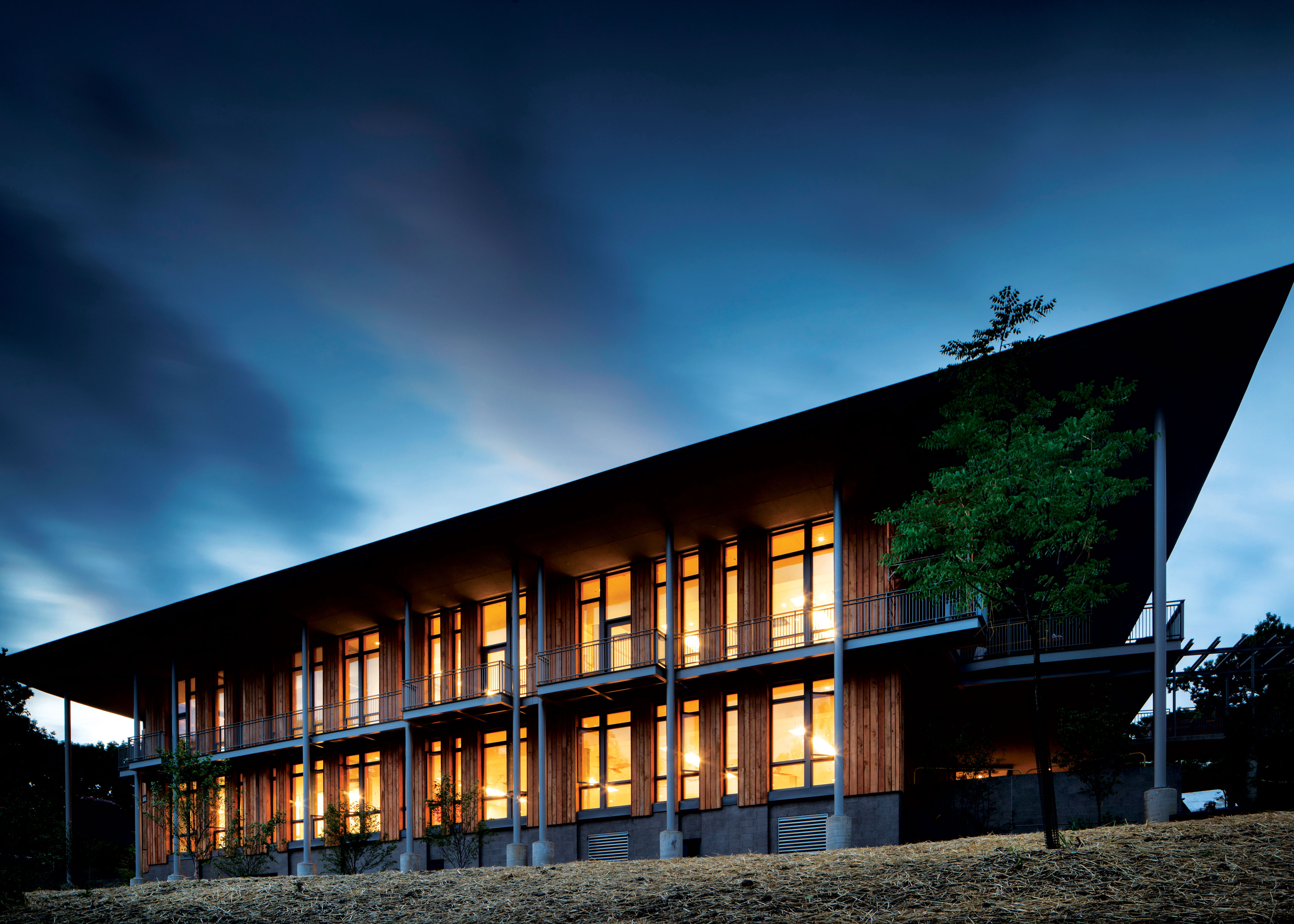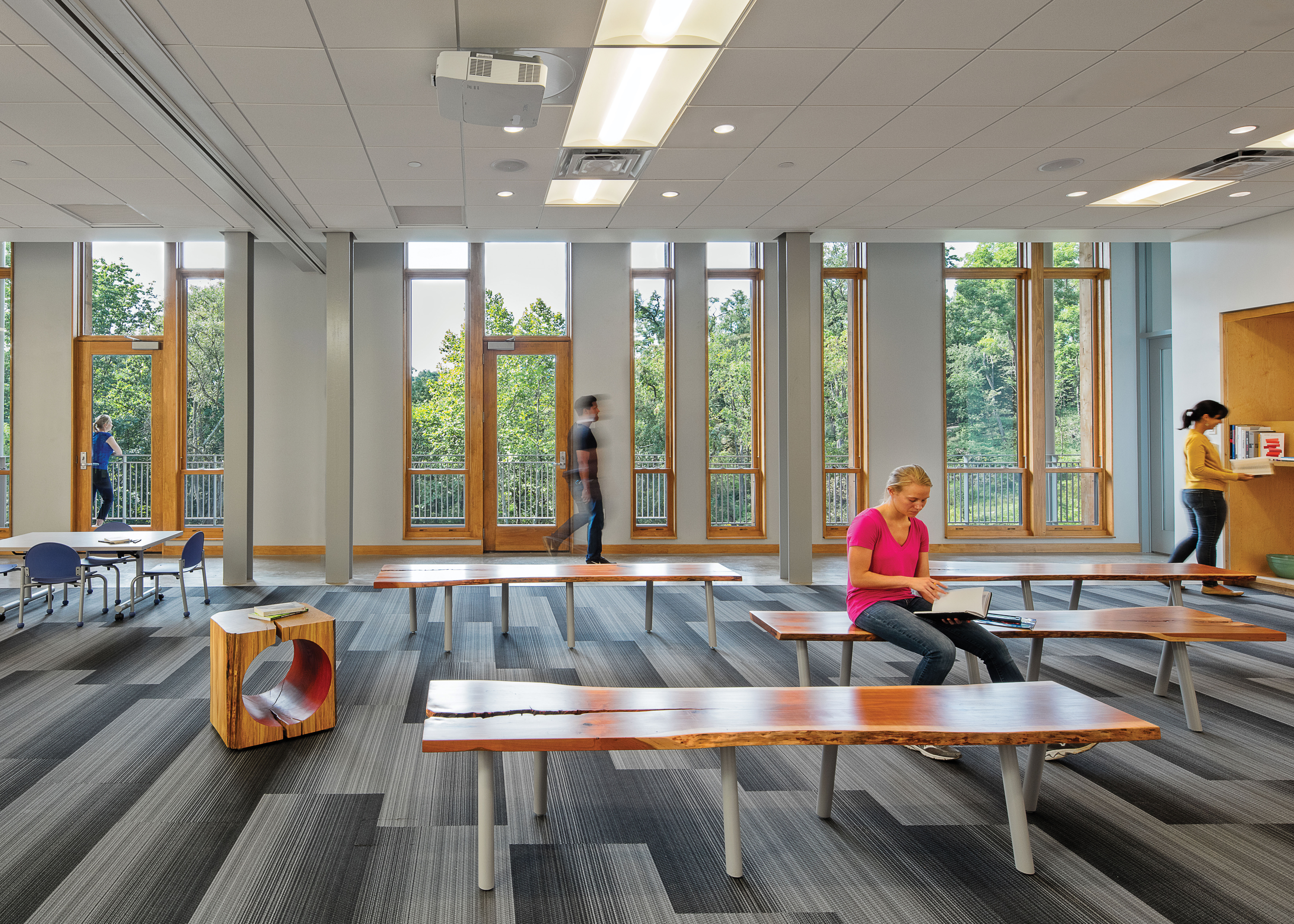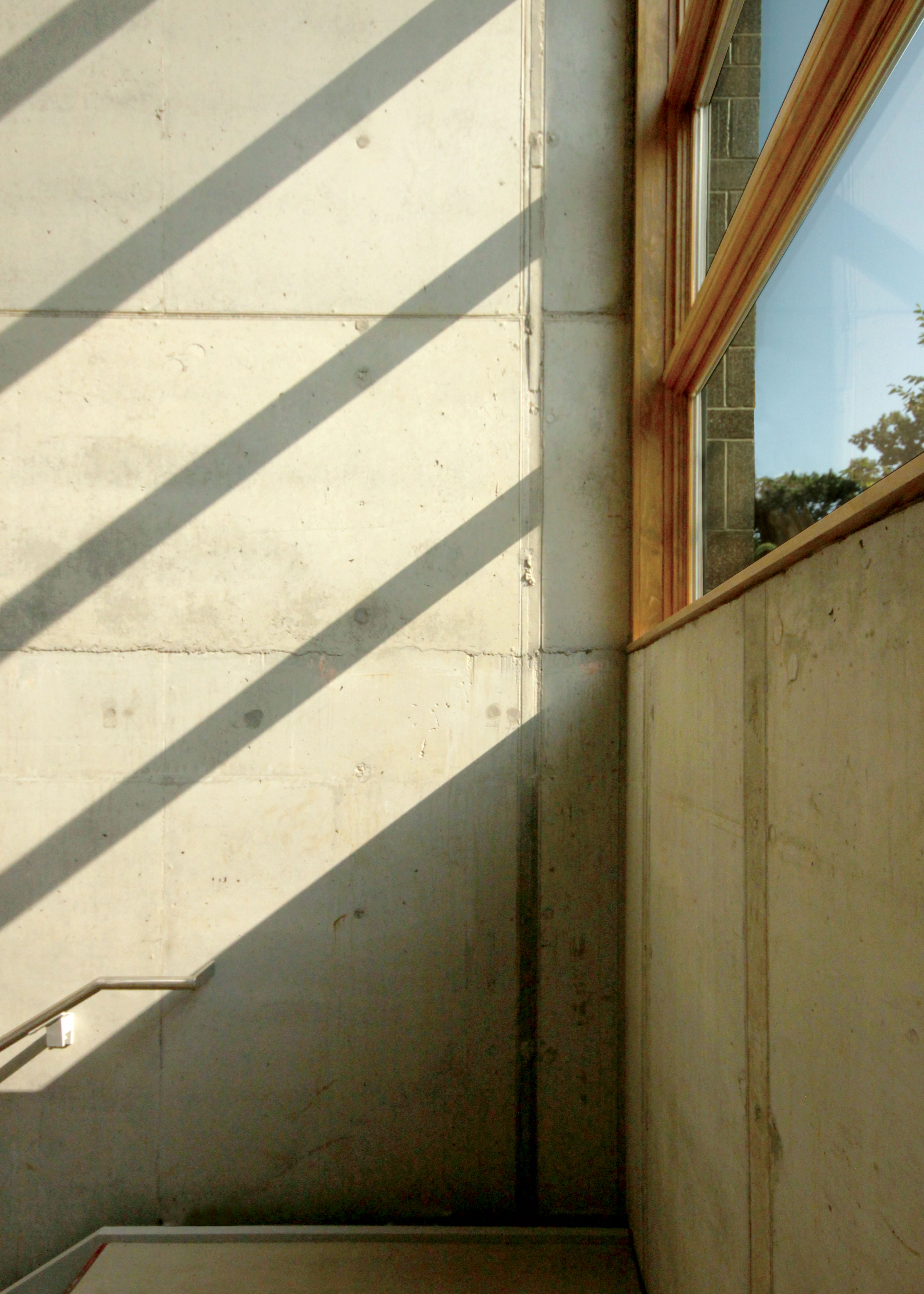
The Frick Environmental Center is a living building. [Photo: Nic Lehoux]
- SIZE:
15,570 square feet; 1,100 square feet of porches - COST:
$13.75 million - VISITORS:
Estimated 20,000 educational program participants by year five
The Frick Environmental Center was born of tragedy. In 2002 the Pittsburgh Parks Conservancy (PPC)’s old environmental center burned to the ground, leaving a gaping hole in public environmental education in the community.
When the PPC and the City of Pittsburgh decided to build the Frick Environmental Center in the same location, the mission was to both “improve quality of life for the people of Pittsburgh by restoring the park system to excellence in partnership with government and the community,” says Patricia Culley, project architect, and to ensure the projects and its programs were conducted with respect to the environment, historic design, and the needs of Pittsburgh’s diverse region.
Despite the potential complexities, Culley and the architectural team at Bohlin Cywinski Jackson, where she is an associate, were undaunted when they learned that, after a public qualifications process, they had been selected to lead the team. With the firm’s longtime focus on elegant humane design, energy efficiency, and environmental sensitivity—a focus that has earned it more than 625 design awards—they were a perfect fit.

The Frick Environmental Center meets the rigorous standards of the Living Building Challenge as well as LEED Platinum standards for energy efficiency. [Photo: Alexander Denmarsh]
Seeing the Pittsburgh community rallying around the cause was both inspiring and humbling. “The most surprising part of the project has been the sustained engagement of a vast assortment of people, from neighboring community members and environmental educators to the design and construction community, both locally and nationally. This is a testament to the importance of this project, and particularly its role as a public facility,” Culley says.
Beginning in 2009, more than 1,000 people got involved in the visioning and planning process for the new center through dozens of public sessions and meetings sponsored by the PPC in partnership with the City of Pittsburgh. The result was a truly groundbreaking green design implemented by a team of artists, environmental restoration specialists, engineers, and architects—many of whom had deep ties to Pittsburgh and its parks.
Construction began in 2014. Engineered to be a living building, the Frick Environmental Center meets the rigorous standards of the Living Building Challenge as well as LEED Platinum standards for energy efficiency. From its geothermal heating and cooling system to its native black locust wood rain screens, every element has both a technological and aesthetic purpose.
“The vision of PPC is wide appreciation and enjoyment of a sustainable park system whose landscapes, facilities, and programming set world standards of excellence.”
Once the lights came on, the 15,570-square-foot building used 40% less energy than a comparable structure. Some of its most innovative systems include a natural ventilation system that alerts users when outside temperatures and humidity are best for opening and closing windows and 161.7kW photovoltaic canopies over the parking area, offsetting 100% of the building’s energy use and capturing and filtering enough rainwater into a 15,000-gallon underground cistern to accommodate all toilet flushing, landscape irrigation, and the grounds’ historic fountain.
None of these innovations came without challenges. Set in a forested grove, the center’s PV array could have suffered from shading and snow accumulation. But the design team had a fix. “Microinverters were designed into the system to ensure that any shading of the array could be tracked, and the landscaping design was then modified. An ongoing maintenance system is also set up for removal of snow and other debris.”

[Photo: Kent Suhrbier]
This living classroom opened in September 2016, welcoming children and adults from across the city to its hands-on environmental education programs. Visitors can venture into the surrounding park’s gardens, meadows, and woodlands where 200 trees and 6,500 native plants have been planted, as well as see and experience the sustainable technology at work inside the building.
“The vision of PPC is wide appreciation and enjoyment of a sustainable park system whose landscapes, facilities, and programming set world standards of excellence,” Culley says.

